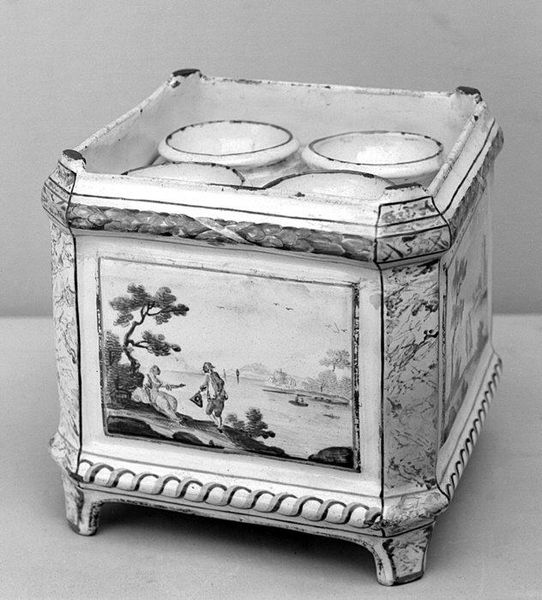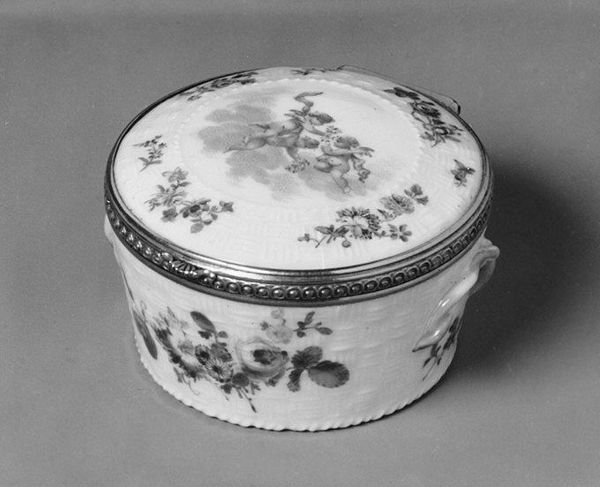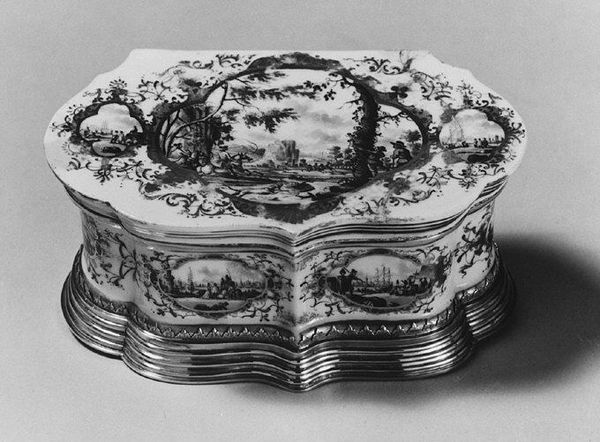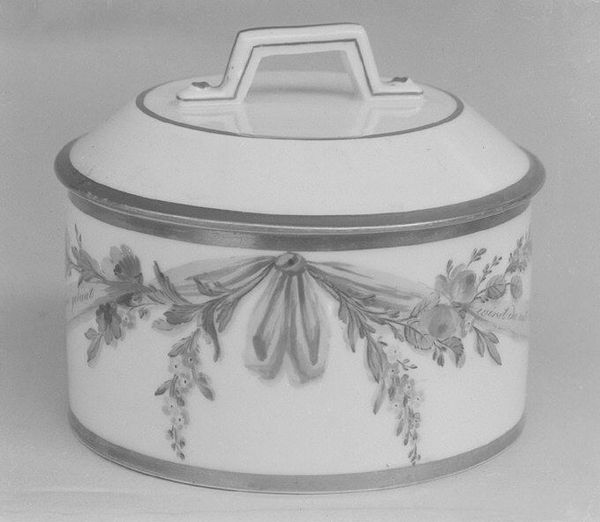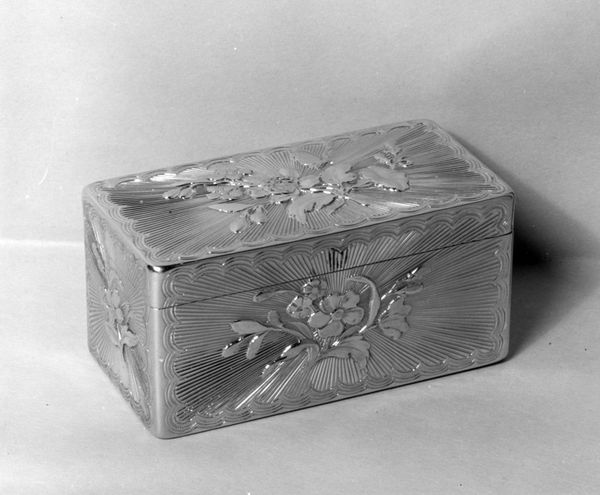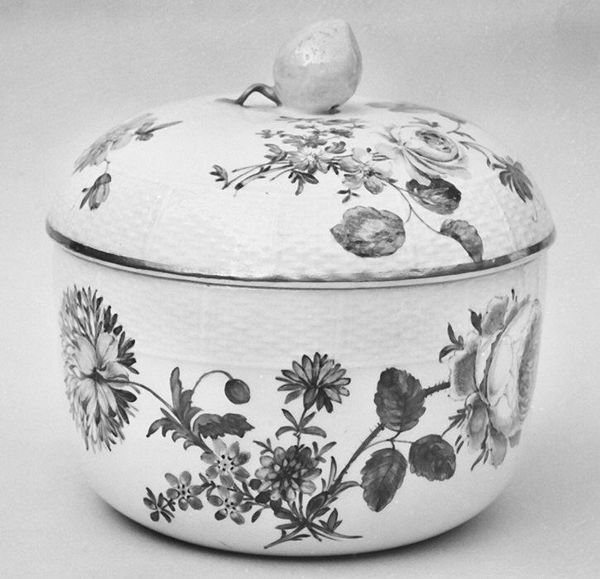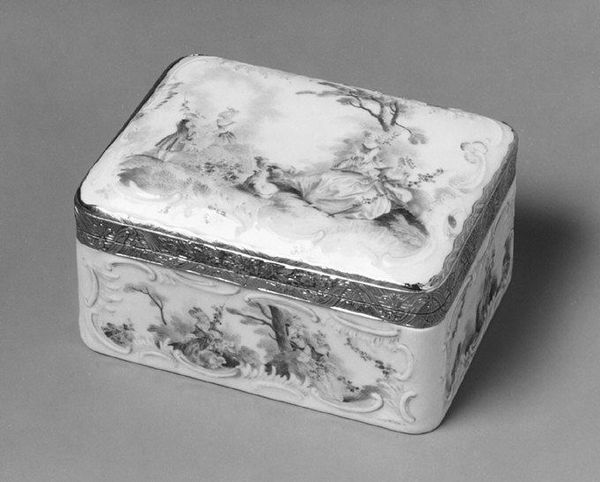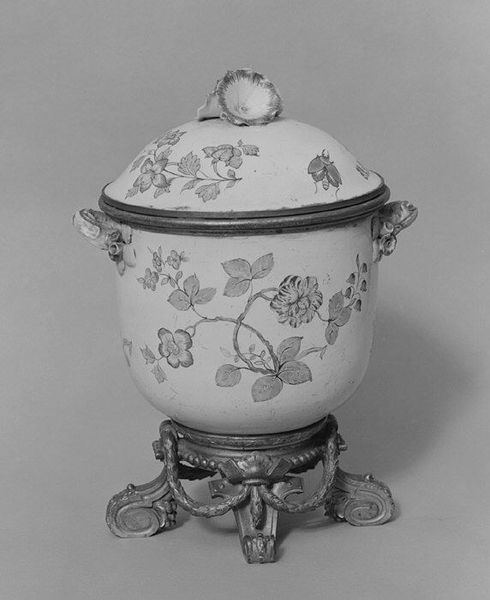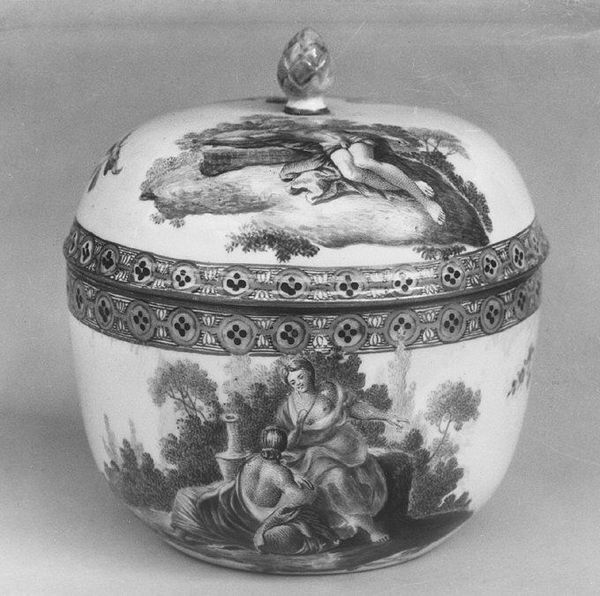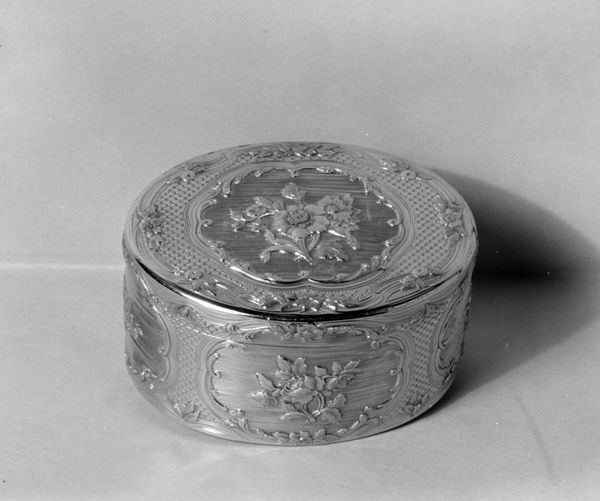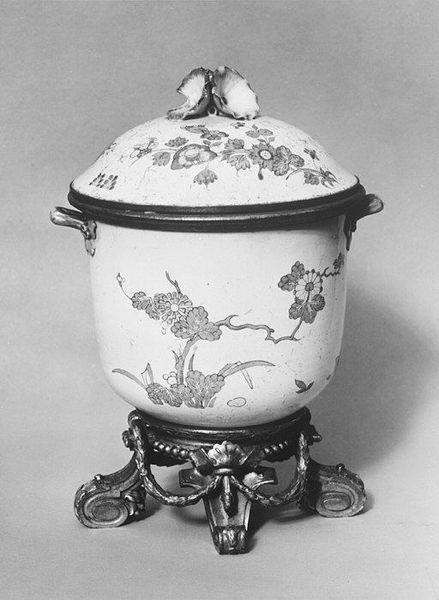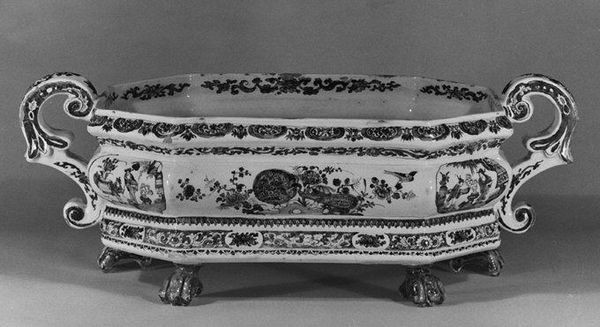
Dimensions: Overall: 5 1/8 × 5 1/4 × 5 1/4 in. (13 × 13.3 × 13.3 cm)
Copyright: Public Domain
This Jardinière was made by Fidelle Duvivier, in the eighteenth century, from faience, also known as tin-glazed earthenware. Faience allowed makers to simulate the appearance of porcelain at a fraction of the cost. The material, being relatively porous and soft, relies on the tin glaze for its bright white surface. It creates the perfect canvas for painted decoration. In this case, we see pastoral scenes, typical of the period, that bring the outside in. But let’s consider this object in its time. The labor involved in the mining of raw materials, preparation of the clay body, multiple firings, and hand-painted decoration, all contribute to its value. The elite consumers who purchased objects like this were participating in a global economy of extraction, production, and consumption. Looking closely at material and making, therefore, is essential to fully understanding this object, and its place in the world. It encourages us to question distinctions between high art and craft.
Comments
No comments
Be the first to comment and join the conversation on the ultimate creative platform.
